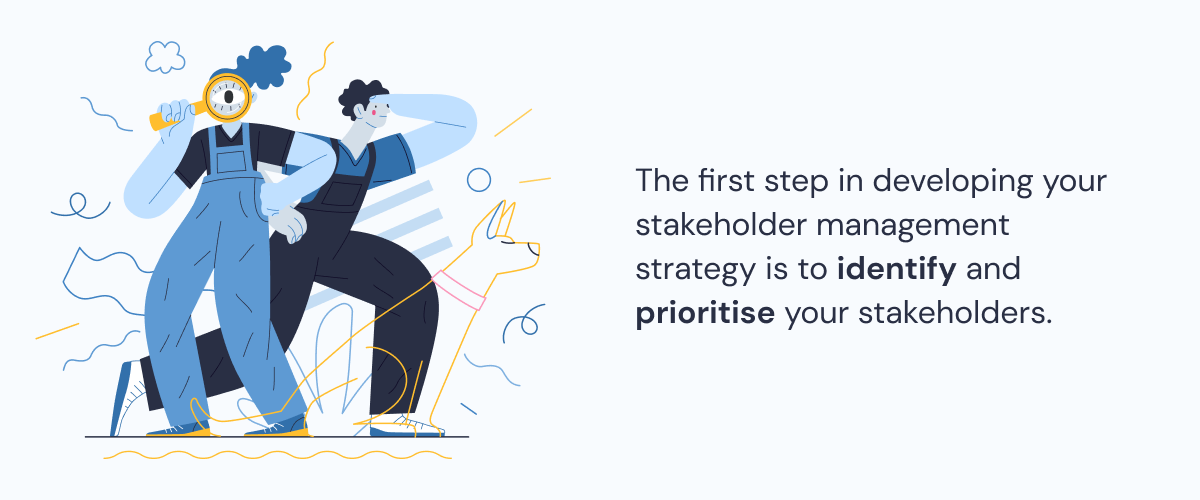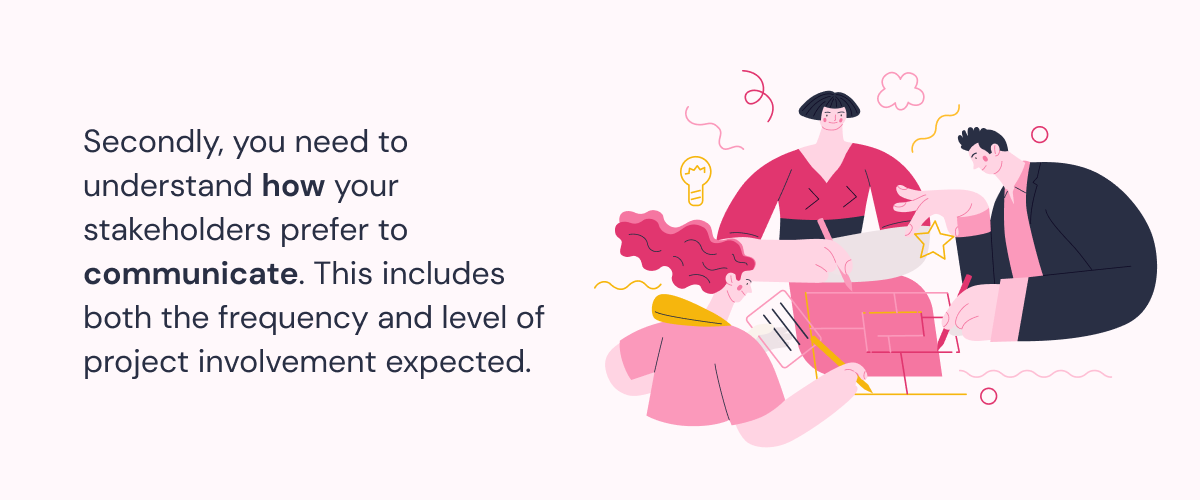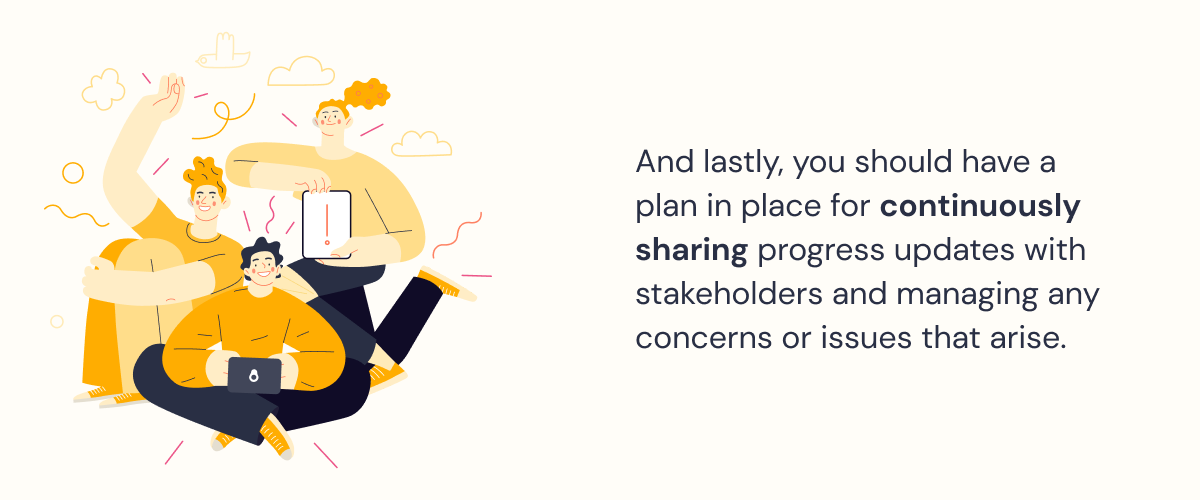A stakeholder management plan helps you to manage all of your stakeholders and their vested interests in an initiative. When it’s done well, it can vastly improve the outcomes of a project. However, the more stakeholders you have the more complex your project becomes and sometimes you need a stakeholder relationship management platform (SRM) to support your strategy.
What is a stakeholder management strategy?
A stakeholder management strategy helps to improve the outcomes of a project. It’s a continuous process of perspective taking and perspective seeking that helps you maximise the value of a project’s outcomes for all stakeholder groups.
A stakeholder management strategy in project management helps you to understand and meet your stakeholders needs and goals. When you know your stakeholders and understand their motivations, you can get a clear view of how your project might impact them. You can also identify potential opportunities and challenges throughout your entire project lifecycle.
So, when should a stakeholder management strategy be done? It should be conducted in any project in which people have vested interests in a project and may be impacted by its outcomes.
For example, a renewable resources company managing a wind farm project would need to have a strategy for managing all stakeholder relationships throughout a project. Noise pollution and land access are examples of issues that would need to be addressed with residents, property owners, investors, and members of government in order to meet the needs of the entire community.
When there are multiple stakeholder groups, your project runs over a geographically dispersed area, or your own stakeholder management team is large, you may need to utilise an SRM to centralise stakeholder information.
An SRM plays a crucial role in stakeholder management strategy because it helps you to capture information about your stakeholders in a secure and central location, analyse their concerns and sentiment, and communicate at scale in a relevant and timely way.
How to develop a stakeholder management strategy using your SRM:
- Stakeholder identification and prioritisation
- Stakeholder communications planning
- Continuous stakeholder management

1. Stakeholder identification and prioritisation
The first step in developing your stakeholder management strategy is to identify and prioritise your stakeholders.
You can start off by identifying the individuals or groups of people that are likely to be affected by your organisation or project. Then you can research and brainstorm other people who might influence your stakeholders and the project, then map out their connections.
There are often more stakeholders than you originally thought, so don’t be afraid to continue adding to your list. This is where an SRM can be valuable.
If you have previously managed similar projects in your SRM, you can look at your historical data and contacts to identify potential stakeholders. You can also review their sentiment and top issues raised to understand their impact on other projects.
This information can feed into your stakeholder mapping, which is a great way to prioritise your stakeholders based on their needs, expectations, influence, and impact.

2. Stakeholder communications planning
Once you have used your stakeholder management strategy to identify needs and key stakeholders, you can then figure out how to work with them.
You should engage with your stakeholders to find out how they prefer to communicate, how frequently they want to hear from your team, what aspects of your project they want to be involved with.
There are different forms of communication that can be used for keeping each stakeholder group informed, depending on their level of influence and interest in your project.
These include partnership, participation, push, and pull communications. For example, a local government might build a partnership with an industry body in order to facilitate joint learning and decision-making on a major infrastructure project. However, it may invite engineers to participate in the project, by consulting within the limits of their responsibility.
Push communications could be broadcasted to local residents, using emails, letters, and flyers to ensure they are kept up to date. In addition, pull communications can be made available to the press via a website if they want to find out more information about the development.
Every stakeholder group will have different expectations for communication and you will need to identify the appropriate channels to reach them on. An SRM can help you to record these expectations and segment your stakeholder groups accordingly. It will also allow you to use a blended mix of communications tools to keep stakeholders informed in their preferred way.
For example, SMS and email tools help project managers to share updates quickly and cost-effectively. They can also analyse sentiment across various stakeholder groups throughout the project lifecycle and update their communications plan accordingly.

3. Continuous stakeholder management
When you create a stakeholder management strategy for the project at hand, you should have a plan in place for continuously sharing progress updates with stakeholders. Your entire stakeholder team should also have a consistent approach for handling stakeholder concerns that might be raised along the way. Staying true to a core message creates trust and helps stakeholders understand change.
By communicating outcomes clearly, all stakeholders can understand what has been achieved and what needs more effort. New goals can be set as required and stakeholders are kept aware of how they can continue to offer their support.
An SRM can help you understand how stakeholder needs are evolving throughout a project. If the right stakeholder data capture process is in place, it’s possible to understand how sentiment is changing across every stakeholder segment.
This ensures that issues are identified and addressed before they become major roadblocks to your project’s success.
An SRM can facilitate ongoing learning.
Every time we implement a stakeholder management strategy, we should reflect on its success and our learnings. A good SRM helps you to store valuable stakeholder information and monitor sentiment throughout the entire project lifecycle. As a result, you will have a pool of valuable data to tap into for your future projects.

